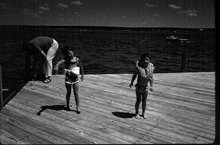
Note: the collections are manifold: the equipment, the memories, the fascinations and obsessions, the collections of desires.
“The cult of remembrance of loved ones, absent or dead, offers a last refuge of the cult value of the picture. For the last time the aura emanates from the early photograph in the fleeting expression of a human face. This is what constitutes their melancholy, incomparable beauty.” --Walter Benjamin, “The Work of Art in the Age of Mechanical Reproduction”
Prague 1976
He remembered her. He thought, one day, she might walk through the door of his studio, apple blossoms from the crooked tree in the garden falling from her hair onto the dusty linoleum. How would he know her? By the fissure that opened to reveal the most desolate landscape he had ever imagined, the one he dreamed of and longed to photograph.
He knew the contours of the terrain as surely as he knew her body, both living in his mind since his return from the war, since the flash of light that erased time, if only long enough for him to see into her soul.
At first he had searched the countryside for the place that only appeared in dreams--dry creek, red earth, twisted juniper. He lost the ability to distinguish between her voice and the sound of the wind. And there were words, unfamiliar shapes in his mouth. He listened with exquisite attention to the notes of music he would one day play for her, and he catalogued, with the precise care of the archaeologist salvaging some fragile artifact from the earth, every detail of the mundane objects of his world. Perhaps she would never walk through that door. Then it would be his duty to preserve the apple blossoms, the drop of rain on the glass, the paper from an unmemorable sandwich--someday she would see the evidence that he had existed, she would decipher from the decisive moment of light, the beauty he beheld. What would I be looking for when I did not find what I wanted to find?



